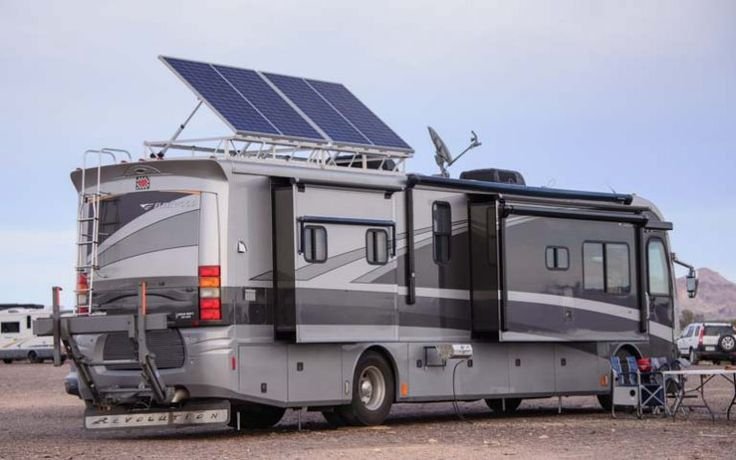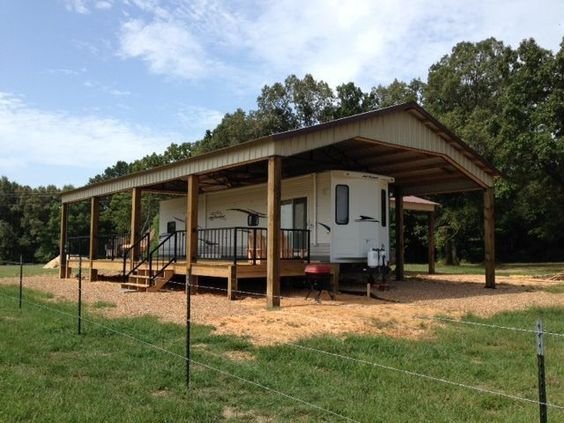The Panama Canal expansion project, completed in 2016, brought significant changes to global shipping by accommodating larger Neo-Panamax vessels through a new third set of locks. This $5.25 billion infrastructure project doubled the canal’s capacity and created unprecedented opportunities for international trade between the Atlantic and Pacific oceans. The expansion’s impact extended far beyond maritime commerce, affecting local communities, housing demands, and temporary accommodation needs throughout the construction period.
Workers and contractors involved in the Neo-Panamax expansion project required flexible, local housing solutions, with many turning to RV accommodations to stay close to construction sites while maintaining cost-effective living arrangements. The scale of this engineering project demanded a substantial workforce over several years, creating unique challenges for temporary housing in Panama’s canal zone. Local RV facilities and temporary housing options became essential infrastructure supporting the expansion’s human resources needs.
The project’s completion marked the beginning of the Neo-Panamax era, fundamentally changing global shipping patterns and establishing new trade routes between Asia and North America’s East Coast. Understanding how this expansion influenced local housing markets, temporary accommodation solutions, and long-term community development provides valuable insights into major infrastructure projects’ broader social and economic impacts.
Neo Panamax Project Housing Options
The Panama Canal expansion created significant housing challenges for the thousands of workers involved in the ampliación del canal de panamá project. Workers required diverse accommodation solutions ranging from temporary RV sites to permanent housing near construction zones.
Local RV Stays for Canal Expansion Workers
RV accommodations became essential for Panama Canal expansion workers seeking flexible, cost-effective housing options. Many contractors and skilled laborers chose recreational vehicles for their mobility and independence during the multi-year construction project.
Local RV parks near the canal zone provided basic amenities including electrical hookups, water connections, and waste disposal systems. These facilities offered monthly rates significantly lower than traditional hotel accommodations.
Key RV Amenities for Workers:
- Full electrical hookups (30/50 amp)
- Potable water connections
- Sewer disposal systems
- Security services
- Laundry facilities
Some workers transported RVs from their home countries, particularly from the United States. Companies like Sheldon Lake RV (16925 Crosby Fwy, Houston, TX 77049, +1 (281) 456-9703) provided sales and service support for workers preparing for extended stays in Panama.
The RV option proved particularly popular among American and European engineers who wanted familiar living conditions while working on the canal expansion project.
Temporary Accommodation Solutions in Panama City
Panama City experienced unprecedented demand for temporary housing during the canal expansion period from 2007 to 2016. Hotels, extended-stay facilities, and furnished apartments quickly filled with international workers and project managers.
Popular Accommodation Types:
- Extended-stay hotels with kitchenettes
- Furnished corporate apartments
- Residential hotels with monthly rates
- Shared housing arrangements
Rental prices increased by approximately 40-60% in areas closest to construction sites. Many workers chose accommodations in Panama City’s financial district for better amenities and transportation access.
Construction companies often negotiated bulk rates with hotel chains and apartment complexes. These agreements provided guaranteed occupancy in exchange for reduced monthly rates.
The influx of workers created a secondary market for short-term rentals. Local property owners converted spare rooms and small apartments into worker accommodations.
Long-Term Housing Impacts Near the Panama Canal
The Panama Canal expansion permanently altered housing markets in surrounding communities. Areas like Colón and Gamboa experienced lasting changes in property values and residential development patterns.
Permanent Housing Market Changes:
- 25-35% increase in property values near canal zones
- Development of new residential complexes
- Improved infrastructure in previously underdeveloped areas
- Increased demand for rental properties
Local communities invested in housing infrastructure to support the expanded canal’s permanent workforce. New residential developments included modern amenities designed to attract skilled technical workers.
The expansion created approximately 7,000 permanent jobs, requiring sustainable housing solutions beyond temporary worker accommodations. This led to partnerships between the Panama Canal Authority and private developers.
Housing demand shifted from temporary solutions to permanent family-oriented communities. Schools, medical facilities, and commercial centers expanded to support these new residential areas near the canal.
Expansion of the Panama Canal: Third Set of Locks
The Third Set of Locks Project, completed in 2016, doubled the Panama Canal’s capacity through the construction of two massive lock complexes including the Agua Clara locks. The expansion required advanced water-saving technology, specialized tugboat operations, and comprehensive environmental measures to accommodate Neo-Panamax vessels.
Key Features of the New Locks
The new locks measure 427 meters long, 55 meters wide, and 18.3 meters deep. These dimensions allow vessels up to 370.33 meters in length to transit the waterway.
The Agua Clara locks on the Atlantic side and the Cocoli locks on the Pacific side each feature three chambers. Each chamber can accommodate ships carrying up to 14,000 TEU containers.
Lock Specifications:
- Length: 427 meters (1,400 feet)
- Width: 55 meters (180 feet)
- Depth: 18.3 meters (60 feet)
- Maximum vessel length: 370.33 meters (1,215 feet)
The locks connect directly to Gatun Lake through a series of approach channels. The system operates independently from the original Panamax locks, creating a third traffic lane for the waterway.
Rolling gates replace the traditional miter gates used in the original locks. These gates measure up to 30 meters high and weigh approximately 3,100 tons each.
Water-Saving Basins and Environmental Measures
Each lock chamber incorporates nine water-saving basins that reduce freshwater consumption by 60 percent per transit. The basins capture and reuse water that would otherwise flow to the ocean.
The system recycles approximately 60 percent of the water used during each locking operation. Water flows by gravity from Gatun Lake through the Chagres River watershed system.
Water Conservation Features:
- Nine basins per lock chamber
- 60% water savings per transit
- Gravity-fed system from Gatun Lake
- Direct connection to Chagres River
The Panama Canal Authority (ACP) implemented extensive reforestation programs around the expansion sites. These programs planted over 3 million trees to protect the watershed that supplies water to the locks.
Environmental monitoring systems track water quality and wildlife movement throughout the canal zone. The expansion includes fish ladders and wildlife corridors to maintain ecosystem connectivity.
Role of Tugboats in Neo-Panamax Ship Movement
The Panama Canal Authority acquired 14 new tugboats specifically for Neo-Panamax operations, expanding the total fleet to 46 vessels. Eight of these tugboats feature advanced firefighting capabilities for enhanced safety.
Tugboats provide precise maneuvering assistance due to the tight clearances in the new locks. Neo-Panamax ships have only 0.6 meters of clearance on each side when transiting the locks.
Tugboat Fleet Specifications:
- 14 new tugboats for expansion
- 8 equipped with firefighting systems
- Total fleet: 46 tugboats
- Specialized training for captains
Each Neo-Panamax transit requires multiple tugboats working in coordination. The tugboats assist with approach maneuvers, lock entry, and departure procedures.
Tugboat captains undergo rigorous training programs to handle the larger vessels safely. The ACP conducted extensive trial runs before opening the new locks to commercial traffic in 2016.
Rise of Neo Panamax and Global Trade Implications
The Panama Canal expansion project fundamentally transformed global maritime trade by accommodating Neo-Panamax vessels that are nearly twice the size of traditional Panamax ships. This $5.25 billion investment shifted major shipping routes and reduced transportation costs for international trade between Asia and North America’s eastern seaboard.
Larger Vessels and Increased Cargo Capacity
Neo-Panamax vessels represent a significant leap in maritime transportation capacity compared to traditional Panamax ships. These larger vessels can measure up to 1,200 feet in length, 160 feet in width, and maintain a draft of 50 feet.
The cargo capacity differences are substantial:
| Vessel Type | TEU Capacity | Length | Width |
|---|---|---|---|
| Traditional Panamax | 4,500-5,000 | 965 feet | 106 feet |
| Neo-Panamax | 13,000-14,000 | 1,200 feet | 160 feet |
Container ships and cargo ships utilizing the expanded canal can now carry approximately three times more cargo per transit. Major shipping companies like COSCO Shipping Panama have deployed these larger vessels to transport grains, coal, and manufactured goods more efficiently.
The first Neo-Panamax vessel transited the expanded canal in 2016. Since then, more than 2,500 of these larger vessels have completed the journey through the new locks.
Maritime Trade Route Shifts
The expansion created new opportunities for maritime trade routes that previously favored the Suez Canal. Container ships traveling from Asian ports to the eastern United States now find the Panama Canal more economically viable.
Countries like China and Japan increased their exports to North America’s eastern seaboard through this route. The shipping industry redirected significant cargo volumes away from traditional trans-Pacific routes that required additional trucking or rail transport from western ports.
International trade patterns shifted as the expanded canal became competitive with alternative routes. Cargo ships carrying bulk commodities like grains and coal found new efficiencies in reaching Atlantic markets from Pacific origins.
The canal now handles vessels that previously could only use the Suez Canal route. This created redundancy in global shipping networks and reduced dependency on single maritime chokepoints.
Economic Benefits for Panama and Beyond
The Panama Canal expansion generates approximately 6% of Panama’s GDP through direct revenue and related economic activities. The project created thousands of jobs in logistics, transportation, and canal operations.
Government revenue from canal operations funded major infrastructure improvements. New roads, bridges, and port facilities enhanced connectivity around canal zones and major cities.
Foreign investment increased as international companies established regional distribution centers in Panama. The country strengthened its position as a logistics hub for Latin America and Caribbean markets.
Economic benefits extended beyond Panama’s borders. Port authorities in the eastern United States invested billions in infrastructure upgrades to accommodate Neo-Panamax vessels arriving from the expanded canal.
Impact on Global Shipping Costs
Neo-Panamax vessels reduced per-container transportation costs through economies of scale. Larger cargo capacity per transit lowered fuel costs and crew expenses relative to cargo volume.
The shipping industry achieved cost savings by consolidating smaller shipments into fewer, larger vessel transits. This efficiency particularly benefited bulk commodity transport including grains and coal shipments.
Global shipping costs between Asia and North America’s eastern ports decreased as the expanded Panama Canal provided a more direct route. Companies reduced their reliance on expensive overland transportation from western ports.
Competition between the Panama Canal and Suez Canal routes created downward pressure on transit fees and associated shipping costs. This competition benefited international trade by making global commerce more cost-effective for businesses worldwide.
Long-Term Impacts on Local Communities and Industries
The Panama Canal expansion has fundamentally transformed Panama’s economic landscape, driving unprecedented infrastructure development and reshaping transportation networks. These changes have created lasting effects on employment patterns, urban growth, and regional connectivity across the country.
Economic Growth in Panama
The expansion generated substantial revenue increases for Panama’s national economy through higher toll collections and expanded maritime services. The Panama Canal Authority now accommodates Neo-Panamax vessels, which pay significantly higher transit fees than traditional Panamax ships.
Employment opportunities multiplied across multiple sectors. The canal operations directly employ thousands of Panamanians in engineering, maintenance, and administrative roles. Supporting industries including shipping services, logistics, and maritime maintenance have expanded their workforce substantially.
Key Economic Benefits:
- Increased toll revenue from larger vessels
- Growth in maritime service sectors
- Tourism expansion around canal facilities
- Construction sector stimulation
Local businesses near canal facilities experienced growth as vessel traffic increased. Panama City benefits from enhanced international trade connections, attracting more shipping companies and logistics firms to establish regional headquarters.
The expansion strengthened Panama’s position as a regional financial center. Banks and insurance companies expanded services to support the growing maritime industry.
Infrastructure Development and Urbanization
The expansion project catalyzed major infrastructure improvements throughout Panama. New roads, bridges, and utility systems were constructed to support increased economic activity and population growth.
Panama City underwent significant urban development. Commercial districts expanded to accommodate growing businesses in shipping and logistics sectors. Residential areas developed rapidly as employment opportunities attracted workers from other regions.
Infrastructure Improvements Include:
- Enhanced road networks connecting canal zones
- Upgraded port facilities in Colon and Panama City
- Expanded telecommunications infrastructure
- New housing developments
Water and electricity systems required upgrades to serve increased industrial demand. The canal’s higher water usage necessitated improvements to the national water management system.
Transportation networks improved significantly. New highways and upgraded existing routes reduced travel times between major economic centers and canal facilities.
Housing demand increased substantially in areas near canal operations. This growth supported local construction industries but also created affordability challenges for existing residents.
Effects on Port Operations and Transportation
Port facilities in Colon and Panama City expanded capacity to handle increased cargo volumes from Neo-Panamax vessels. These ports invested in larger cranes and expanded storage facilities to accommodate bigger ships.
Transportation costs decreased for many shipping routes as larger vessels achieved better economies of scale. The expanded canal reduced transit times and fuel consumption for major shipping lines.
Transportation Changes:
- Reduced shipping costs for Asian-US East Coast routes
- Faster transit times through Panama vs. alternative routes
- Increased cargo capacity per vessel transit
Rail and trucking industries adapted to handle larger cargo volumes from expanded port operations. Intermodal transportation facilities grew to connect canal ports with inland destinations.
Regional airports expanded services to support increased business travel. The shipping industry’s growth attracted more international companies requiring air connectivity.
Local transportation infrastructure faced increased pressure from higher traffic volumes. Road maintenance requirements increased as commercial vehicle usage grew substantially around port areas.
Frequently Asked Questions
The Panama Canal expansion project created significant housing challenges for workers while introducing new vessel classifications and operational capabilities. The project’s completion in 2016 transformed global shipping patterns and established new accommodation requirements for temporary residents.
How has the expansion of the Panama Canal influenced local housing options for project workers?
The expansion project created temporary housing shortages that led many workers to utilize RV accommodations and extended-stay facilities like those at Sheldon Lake RV during the construction period from 2009-2016.
What are the accommodation regulations for RVs in proximity to the Neo-Panamax expansion project?
RV accommodations near the canal expansion sites must comply with local zoning regulations and temporary housing permits established during the construction phase.
What distinctions can be made between the new Neopanamax Locks and the original Panama Canal locks?
The Neopanamax locks measure 427 meters long by 55 meters wide and 18.3 meters deep, while original Panamax locks measure 304.8 meters long by 33.5 meters wide.
How does the size of Neo-Panamax vessels compare to traditional Panamax ships?
Neo-Panamax container ships can carry over 14,000 TEU compared to traditional Panamax vessels that transport up to 5,000 TEU.
What is the projected or actual completion date of the Panama Canal expansion project?
The Panama Canal expansion project was completed and inaugurated on June 26, 2016, after seven years of construction from 2009-2016.
What impact has the Panama Canal expansion had on global shipping routes, particularly concerning China?
The expansion enabled more efficient shipping routes between Asia and the US East Coast, allowing larger vessels to transport goods from Chinese ports through the canal rather than using longer Pacific routes.




